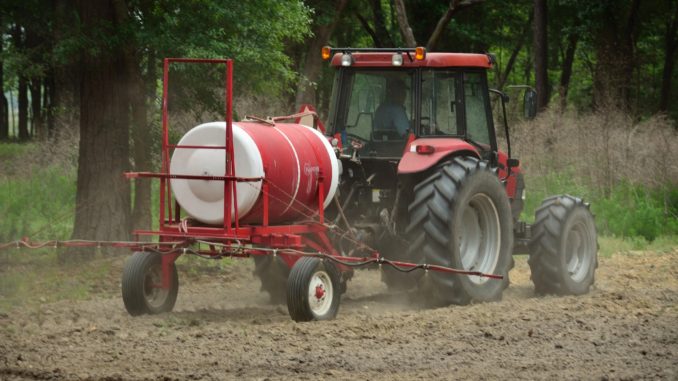
Each year, landowners with an interest in providing food for wildlife spend countless hours on the tractor, at the farm supply store and at the kitchen table trying to develop a productive crop. Growing an optimum crop results from a lot of hard work, intelligent engineering, strategic planning and of course, a lot of luck.
But a large part of the puzzle is nutrient availability. Plants need a special recipe of nutrients to grow, reproduce and thrive. While most fertilizer treatments are produced synthetically, organic or naturally-occurring fertilizers may offer a better solution for landowners growing food plots for wildlife.
For plants to survive, they require a unique concoction of soil elements that include both micronutrients and macronutrients. Essentially, plants require nine macronutrients: nitrogen, phosphorus, potassium, calcium, oxygen, sulfur, hydrogen, carbon, and magnesium. In the micronutrient category, plants require eight others: manganese, chlorine, boron, cobalt, iron, molybdenum, copper and zinc. The micronutrients are the smaller of the two, but don’t let their size or concentration detract from their importance.
Most micronutrients serve as catalysts to make macronutrients available to plants, and without these micronutrients, the nitrogen, phosphorus, potassium and others would go unused. They are available in the soil at some level, but rarely in the concentrations to grow a good crop.
Each nutrient is responsible for a part of a certain metabolic activity in plant tissues and is critical for a portion of the life cycle. When any one of these nutrients is lacking, some portion of plant growth is affected. These nutrients are often supplemented with soil amendments in a granular, pulverized or liquid form after soil chemistry testing is complete.
Most farmers amend the soils by using truckloads of synthetic materials. However, many of these micronutrients are not incorporated into the production process, forcing farmers to purchase and apply the micronutrients separately. This is often very pricey and often left out by landowners trying to grow a food plot.
However, natural fertilizers, also known as organic fertilizers, will contain these trace elements. Using a natural fertilizer relieves landowners of having to track down micronutrient sources for their food plots. In most cases, landowners growing food plots can go without.
The most-common organics come from animal by-products, naturally occurring materials or from compost piles, such as: blood meal, composted cow manure, green sand, compost, poultry manure, Milorganite (from human waste) and fish meal. The majority of these materials are available from local farm supply store.
In addition to the nutrient additions to the soil, most organic fertilizers add substance or a less-pervious layer that will help soils retain moisture and any other nutrients attempting to leach through.
Organics are less harsh on growing crops. If applied incorrectly, the roots and foliage can experience a negative response, as most-commercial inorganics are fast-acting and concentrated.
On the flip side, organics are not very fast-acting, and sometimes will need multiple applications to get the same effect as traditional commercial fertilizers. Finally, organics are not generally applicator-friendly. The nature of the inconsistent particle sizes makes it tough for large applications but should not be much of an issue for the small-time landowner growing a small collection of food plots.




Be the first to comment